For engineering and architectural firms on the West Coast, recovery from the economic woes brought on by the pandemic has been an uneven affair. California has moved ahead while firms in the Northwest continue to struggle to regain momentum. For all of them, the immediate future offers complex challenges.
The leading 50 firms on ENR California’s Top 50 Design Firms list—which includes Hawaii—reported total revenue of $6.19 billion for 2021, 7.7% more than their combined 2020 revenue. That outstripped the 2.2% revenue increase for ENR’s national Top 500 Design Firms in 2021.
In the Northwest states—Oregon, Washington and Alaska—the leading 45 companies reported 2021 revenue of $1.67 billion, 6.5% less than the 2020 figure.
Optimism, however, is prevalent in both regions due to the onset of funding through the Infrastructure Investment and Jobs Act (IIJA).
“As we begin to see the positive impacts of the IIJA funding, coupled with other state and local funding measures, we continue to see opportunities arising across our portfolio,” says William Shelor, senior vice president for mobility solutions at Parsons, headquartered in Centreville, Va., with 11 offices in California and one in Seattle.
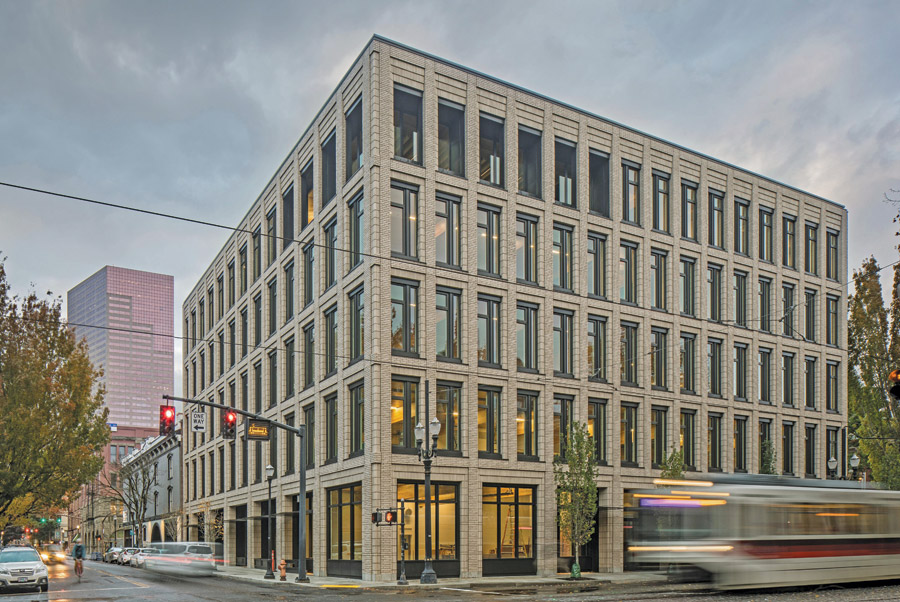
Designed to last 500 years, the PAE Living Building in Portland uses less energy, water and material than comparable buildings while delivering superior levels of occupant comfort and productivity.
Photo by Lara Swimmer for ZGF Architects
That positive outlook is tempered by the awareness of major challenges that firms face to take advantage of the sudden largess. Those issues include materials shortages, cost hikes and labor issues that are proving resilient and will require innovative solutions for firms to thrive.
San Diego provides a snapshot for the design sector’s optimism. To accommodate growth as well as trans-border trade, San Diego is modernizing its transportation infrastructure while also meeting California’s aggressive greenhouse gas emissions reduction goals, says Eddie Sprecco, CEO of the San Diego chapter of the Associated General Contractors of America in Lakeside, Calif.
“There is a lot of work in the pipeline, but difficulties finding people and materials to address the work remain,” he says. “And that’s not just on the contractor side, but the public agency staffing that is needed to manage the work has been heavily impacted by lockdowns, remote work and the Great Resignation.”
“There is a lot of work in the pipeline, but difficulties finding people and materials to address the work remain.”
—Eddie Sprecco, CEO, San Diego AGC
In the Northwest, firms have had to contend with the lagging recovery for the construction industry as a whole in that region.
However, R&M Consultants improved its Northwest revenue 3.4% from 2020 to 2021. One reason was that the company intensified its employee focus, resulting in high staff utilization and successful pursuit of new work, says Andrea Story, vice president, marketing and business development for the multidisciplinary engineering firm based in Anchorage with an office in Fairbanks.
The company has already seen an infusion of public money into the construction industry from federal COVID-19 relief measures and expects that the IIJA money will extend that.
“We are predicting an increase in transportation such as airports, roads, ports and harbors as well as water and wastewater,” she says, noting that energy projects in Alaska should increase, too, if oil prices stay high.
Todd Stine, a partner in the Seattle office of ZGF Architects, reports that almost all the firm’s projects continued in 2020 as part of what he calls “an almost historic economic expansion of the region’s design and construction industry.”
However, the Portland-based company reported regional revenue fell 8.7% in 2021 for Oregon, Washington and Alaska, following the trend of a regionwide falloff for the year. The architecture, interior and landscape design firm also has West Coast offices in Los Angeles and Vancouver, British Columbia.
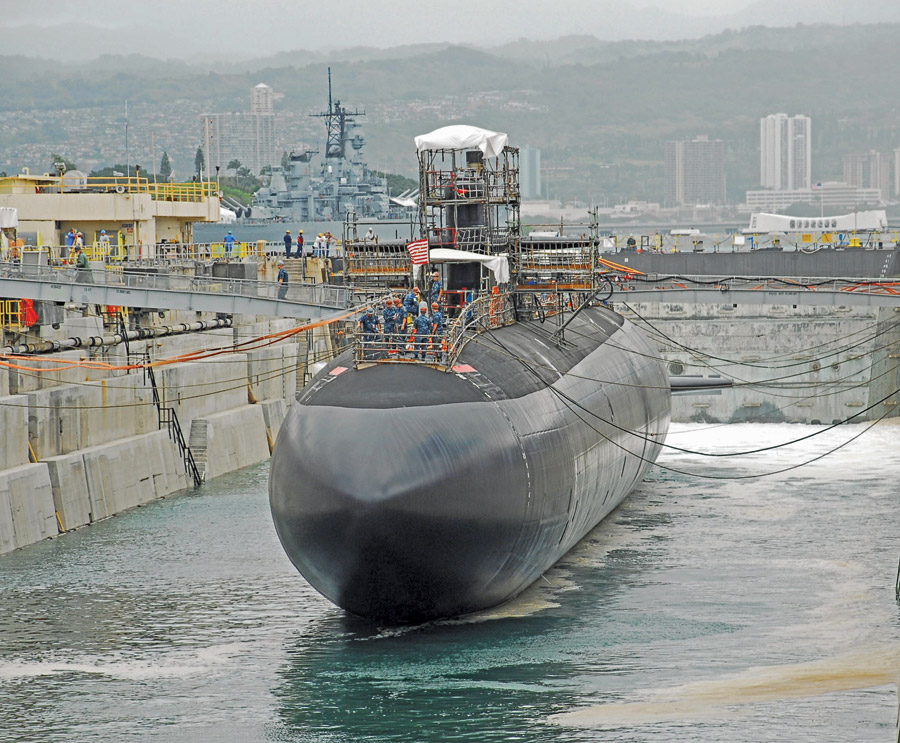
Stantec, WSP USA and Moffatt & Nichol are combining architect-engineer services as part of a five-year, $500-million contract to modernize Pearl Harbor Naval Shipyard and West Coast facilities.
Photo courtesy of Stantec
“From both the standpoint of the continued effects of the pandemic as well as the inevitable cooling of the regional market, we feel fortunate that the reduction in our 2021 regional revenue was as relatively small as it was,” Stine says.
Through the end of 2021 and the beginning of 2022, ZGF maintained a strong performance in the California and Northwest markets. In particular, life sciences has been very strong, and Stine expects that to continue for some time.
A standout company-designed project is the PAE Living Building, a five-story, 55,000-sq-ft, mixed-use building in Portland’s Old Town/Skidmore district—the first developer-led project and one of the largest commercial urban Living Buildings in the world. Designed to last for 500 years, it combines the look of a historic neighborhood with the highest possible energy performance and sustainability standards. “Critically, the project’s success demonstrates that Living Buildings are not only technically possible on a dense urban site but also financially viable,” Stine says.
“However, with the rapid escalation in construction costs in the last several months, we are certainly starting to see some slowing as our clients are struggling to balance their needs for capital improvements with their available funding,” he adds.
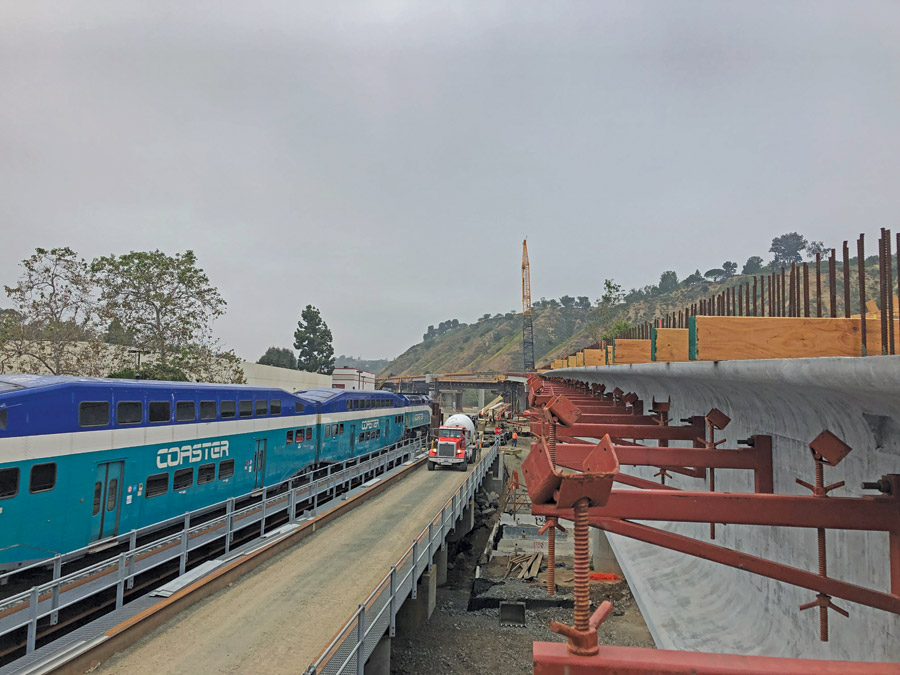
Mid-Coast Transit Constructors, a joint venture of Stacy and Witbeck, Herzog and Skanska, is building out light rail from downtown San Diego to UC San Diego’s La Jolla campus and area tech/biotech hubs.
Photo courtesy of Mid-Coast Transit Constructors
The Highway Ahead
In the near future, AGC’s Sprecco says that the local design sector will experience consolidation, with fewer midsize regional general contractors and more national ones.
He is also seeing increased unionization in San Diego, largely an open-shop city for 30-plus years. In part, government drives this trend through mandated project labor agreements (PLAs) that require contractors to use a unionized labor force, he explains.
However, the local subcontracting community in San Diego is still largely open shop. “So the PLAs have a greater impact on that segment of the industry, resulting in workforce disruption, competition from out of town and, ultimately, higher prices for owners,” he adds.
Stantec is seeing growth in a number of market sectors throughout the Pacific region, including public infrastructure (transportation and water), climate resilience and energy transition, says Sarah McIlroy, U.S. Pacific regional leader for the Edmonton, Alberta-based company. Stantec’s regional revenue rose 6.3% from in 2021 in the Northwest but declined 5.9% in California and Hawaii in the same time period.
Trends include infrastructure improvements, such as transportation, roadways and water, energy, industrial and manufacturing, commercial, public, institutional and municipal utility projects, she says. Other environmental sectors such as energy transition, climate change and sustainability are also strong, she adds.
The Kiewit-Stantec design-build team recently broke ground on two multiyear projects that will help remediate water from northwest of downtown Los Angeles for the city’s Dept. of Water and Power. The $400-million projects will incorporate state-of-the-art strainers, 10 largest-of-their-kind ultraviolet advance oxidation process reactors, 54 13,000-gallon granular activated-carbon units, 12 miles of pipe and nearly 250 miles of electrical cable.
“Retaining and attracting our own talent will likely continue to be a challenge for the rest of this year.”
—Todd Stine, Partner, ZGF Architects
Parsons’ Shelor expects that customers will continue to seek out digital solutions, including augmented and virtual reality tools or other technology to more efficiently make changes before schedules and budgets are significantly impacted. The company also is seeing a substantial focus on project delivery via alternative delivery methods including progressive design-build, CM/GC and other methods.
One design-build example completed by the company in 2021 was the Coffee Creek project, a Washington State Dept. of Transportation contract to open blocked salmon spawning habitats for 21 northwest Washington tribes. Spawning salmon were spotted upstream and downstream of the crossing just weeks after it opened, and the project received a National Recognition Award from the American Council of Engineering Cos. as part of the 2021 Engineering Excellence Awards.
Sprecco notes the risks from price escalation and uncertain availability of materials and workers. “How contracts are written and how owners work, or don’t work, with contractors to address historic uncertainties can have huge impact on projects,” he says.
Accommodating the hybrid work model and related labor issues is also a concern.
ZGF’s Stine says, “Retaining and attracting our own talent will likely continue to be a challenge for the rest of this year.”
A significant labor shortage exists in the engineering sector, R&M’s Story explains, adding that ACEC estimates IIJA funding will create 82,000 jobs in the industry. “But none of us really know where those 82,000 people are going to come from,” she says.
Finding the right people and incentivizing the next generation of engineers and architects is crucial, Shelor agrees. “As we experience a once-in-a-generation investment in infrastructure projects, we continue to seek out the talented individuals who will turn these investments into reality.”


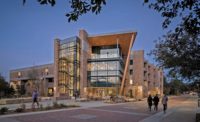
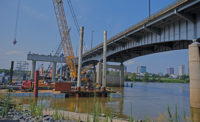
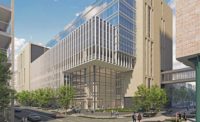
Post a comment to this article
Report Abusive Comment